FoxH1 Represses the Promoter Activity of cyp19a1a in the Ricefield Eel (Monopterus albus)
Abstract
1. Introduction
2. Results
2.1. Sequence Analysis of Ricefield Eel foxh1
2.2. Expression Patterns of foxh1 in M. albus
2.3. Expression of foxh1 after FSH and hCG Incubation In Vitro
2.4. Colocalization of FoxH1/Cyp19a1a in EV-Stage M. albus Ovaries
2.5. Colocalization of FoxH1 and Cyp19a1a in MLV-Stage M. albus Ovaries
2.6. Activation of the cyp19a1a Promoter by Foxh1 via the Forkhead Binding Site In Vitro
3. Discussion
4. Materials and Methods
4.1. Sample Collection and Preparation
4.2. RNA Extraction and cDNA Synthesis
4.3. Cloning of M. albus foxh1 cDNA
4.4. Quantitative Real-Time Polymerase Chain Reaction (qRT–PCR)
4.5. Immunofluorescence
4.6. Expression Patterns of foxh1 after Incubation of Ovaries with hCG and FSH In Vitro
4.7. Sequence Analysis
4.8. Plasmid Construction and Dual-Luciferase Reporter Assays
4.9. Statistical Analysis
5. Conclusions
Supplementary Materials
Author Contributions
Funding
Institutional Review Board Statement
Informed Consent Statement
Data Availability Statement
Acknowledgments
Conflicts of Interest
References
- Rajakumar, A.; Senthilkumaran, B. Steroidogenesis and its regulation in teleost—A review. Fish. Physiol. Biochem. 2020, 46, 803–818. [Google Scholar] [CrossRef] [PubMed]
- Lubzens, E.; Young, G. Oogenesis in teleosts: How eggs are formed. Gen. Comp. Endocrinol. 2010, 165, 367–389. [Google Scholar] [CrossRef]
- Hannenhalli, S.; Kaestner, K.H. The evolution of Fox genes and their role in development and disease. Nat. Rev. Genet. 2009, 10, 233–240. [Google Scholar] [CrossRef]
- Dai, S.; Qu, L. Toward a mechanistic understanding of DNA binding by forkhead transcription factors and its perturbation by pathogenic mutations. Nucleic Acids Res. 2021, 49, 10235–10249. [Google Scholar] [CrossRef] [PubMed]
- Wang, D.S.; Kobayashi, T. Foxl2 up-regulates aromatase gene transcription in a female-specific manner by binding to the promoter as well as interacting with ad4 binding protein/steroidogenic factor 1. Mol. Endocrinol. 2007, 21, 712–725. [Google Scholar] [CrossRef] [PubMed]
- Ji, X.; Bu, S. Identification of SF-1 and FOXL2 and Their Effect on Activating P450 Aromatase Transcription via Specific Binding to the Promoter Motifs in Sex Reversing Cheilinus undulatus. Front. Endocrinol. 2022, 13, 863360. [Google Scholar] [CrossRef] [PubMed]
- Si, Y.; Ding, Y. DNA methylation level of cyp19a1a and Foxl2 gene related to their expression patterns and reproduction traits during ovary development stages of Japanese flounder (Paralichthys olivaceus). Gene 2016, 575, 321–330. [Google Scholar] [CrossRef]
- Ning, Y.; Fan, M. Two Foxo1 homologues in the orange-spotted grouper Epinephelus coioides: Sequences, expression, and possible involvement in the activation of cyp19a1a expression in the ovary. Fish. Physiol. Biochem. 2021, 47, 1597–1610. [Google Scholar] [CrossRef]
- Liu, Q.; Zhang, Y. Foxo3b but not Foxo3a activates cyp19a1a in Epinephelus coioides. J. Mol. Endocrinol. 2016, 56, 337–349. [Google Scholar] [CrossRef] [PubMed][Green Version]
- Zhang, W.; Lu, H. Isolation and characterization of cyp19a1a and cyp19a1b promoters in the protogynous hermaphrodite orange-spotted grouper (Epinephelus coioides). Gen. Comp. Endocrinol. 2012, 175, 473–487. [Google Scholar] [CrossRef]
- Huang, W.; Zhou, L. Expression pattern, cellular localization and promoter activity analys is of ovarian aromatase (Cyp19a1a) in protogynous hermaphrodite red-spotted grouper. Mol. Cell. Endocrinol. 2009, 307, 224–236. [Google Scholar] [CrossRef]
- Yuan, J.; Tao, W. Genome-wide identification, phylogeny, and gonadal expression of fox genes in Nile tilapia, Oreochromis niloticus. Fish. Physiol. Biochem. 2014, 40, 1239–1252. [Google Scholar] [CrossRef]
- Chen, X.; Rubock, M.J. A transcriptional partner for MAD proteins in TGF-beta signalling. Nature 1996, 383, 691–696. [Google Scholar] [CrossRef] [PubMed]
- Chen, X.; Weisberg, E. Smad4 and FAST-1 in the assembly of activin-responsive factor. Nature 1997, 389, 85–89. [Google Scholar] [CrossRef] [PubMed]
- Charney, R.M.; Forouzmand, E. Foxh1 Occupies cis-Regulatory Modules Prior to Dynamic Transcription Factor Interactions Controlling the Mesendoderm Gene Program. Dev. Cell 2017, 40, 595–607.e594. [Google Scholar] [CrossRef] [PubMed]
- Slagle, C.E.; Aoki, T. Nodal-dependent mesendoderm specification requires the combinatorial activities of FoxH1 and Eomesodermin. PLoS Genet. 2011, 7, e1002072. [Google Scholar] [CrossRef] [PubMed]
- Attisano, L.; Silvestri, C. The transcriptional role of Smads and FAST (FoxH1) in TGFbeta and activin signalling. Mol. Cell Endocrinol. 2001, 180, 3–11. [Google Scholar] [CrossRef]
- Howell, M.; Inman, G.J. A novel Xenopus Smad-interacting forkhead transcription factor (XFast-3) cooperates with XFast-1 in regulating gastrulation movements. Development 2002, 129, 2823–2834. [Google Scholar] [CrossRef] [PubMed]
- Pogoda, H.M.; Solnica-Krezel, L. The zebrafish forkhead transcription factor FoxH1/Fast1 is a modulator of nodal signaling required for organizer formation. Curr. Biol. 2000, 10, 1041–1049. [Google Scholar] [CrossRef] [PubMed]
- Pei, W.; Noushmehr, H. An early requirement for maternal FoxH1 during zebrafish gastrulation. Dev. Biol. 2007, 310, 10–22. [Google Scholar] [CrossRef]
- Wang, G.; Liu, L. Expression and distribution of forkhead activin signal transducer 2 (FAST2) during follicle development in mouse ovaries and pre-implantation embryos. Acta Histochem. 2016, 118, 632–639. [Google Scholar] [CrossRef]
- Li, H.; Zhu, Q. Identification and Characterization of Dimorphic Expression of Sex-Related Genes in Rock Bream, a Fish With Multiple Sex Chromosomes. Front. Genet. 2021, 12, 791179. [Google Scholar] [CrossRef]
- Li, S.; Lin, G. Gonadal Transcriptome Analysis of Sex-Related Genes in the Protandrous Yellowfin Seabream (Acanthopagrus latus). Front. Genet. 2020, 11, 709. [Google Scholar] [CrossRef] [PubMed]
- He, Z.; Deng, F. Expression and regulation of Smad2 by gonadotropins in the protogynous hermaphroditic ricefield eel (Monopterus albus). Fish. Physiol. Biochem. 2020, 46, 1155–1165. [Google Scholar] [CrossRef]
- He, Z.; Deng, F. Molecular characterization, expression, and H2O2 induction of p53 and mdm2 in the ricefield eel, Monopterus albus. Aquac. Rep. 2021, 20, 100675. [Google Scholar] [CrossRef]
- He, Z.; Deng, F. Crosstalk between sex-related genes and apoptosis signaling reveals molecular insights into sex change in a protogynous hermaphroditic teleost fish, ricefield eel Monopterus albus. Aquaculture 2022, 552, 737918. [Google Scholar] [CrossRef]
- Zhou, S.; Zawel, L. Characterization of human FAST-1, a TGF beta and activin signal transducer. Mol. Cell 1998, 2, 121–127. [Google Scholar] [CrossRef]
- Boggetti, B.; Argenton, F.; Haffter, P.; Bianchi, M.E.; Cotelli, F.; Beltrame, M. Cloning and expression pattern of a zebrafish homolog of forkhead activin signal transducer (FAST), a transcription factor mediating Nodal-related signals. Mech. Dev. 2000, 99, 187–190. [Google Scholar] [CrossRef]
- Kofron, M.; Puck, H.; Standley, H.; Wylie, C.; Old, R.; Whitman, M.; Heasman, J. New roles for FoxH1 in patterning the early embryo. Development 2004, 131, 5065–5078. [Google Scholar] [CrossRef][Green Version]
- He, Z.; Zheng, L. Expression Patterns and Gonadotropin Regulation of the TGF-β II Receptor (Bmpr2) during Ovarian Development in the Ricefield Eel Monopterus albus. Int. J. Mol. Sci. 2022, 23, 15349. [Google Scholar] [CrossRef] [PubMed]
- Rimon-Dahari, N.; Yerushalmi-Heinemann, L. Ovarian Folliculogenesis. Results Probl. Cell Differ. 2016, 58, 167–190. [Google Scholar] [PubMed]
- Li, J.; Cheng, C.H.K. Evolution of gonadotropin signaling on gonad development: Insights from gene knockout studies in zebrafish. Biol. Reprod. 2018, 99, 686–694. [Google Scholar] [CrossRef]
- Wu, Y.; He, Z. Ontogeny of immunoreactive Lh and Fsh cells in relation to early ovarian differentiation and development in protogynous hermaphroditic ricefield eel Monopterus albus. Biol. Reprod. 2012, 86, 93. [Google Scholar] [CrossRef]
- Bontems, F.; Stein, A. Bucky ball organizes germ plasm assembly in zebrafish. Curr. Biol. 2009, 19, 414–422. [Google Scholar] [CrossRef]
- Tao, W.; Shi, H. Homozygous mutation of foxh1 arrests oogenesis causing infertility in female Nile tilapia. Biol. Reprod. 2020, 102, 758–769. [Google Scholar] [CrossRef] [PubMed]
- Watanabe, M.; Rebbert, M.L. Regulation of the Lim-1 gene is mediated through conserved FAST-1/FoxH1 sites in the first intron. Dev. Dyn. 2002, 225, 448–456. [Google Scholar] [CrossRef]
- Silvestri, C.; Narimatsu, M. Genome-wide identification of Smad/Foxh1 targets reveals a role for Foxh1 in retinoic acid regulation and forebrain development. Dev. Cell 2008, 14, 411–423. [Google Scholar] [CrossRef] [PubMed]
- Chiu, W.T.; Charney Le, R. Genome-wide view of TGFβ/Foxh1 regulation of the early mesendoderm program. Development 2014, 141, 4537–4547. [Google Scholar] [CrossRef] [PubMed]
- Reid, C.D.; Steiner, A.B. FoxH1 mediates a Grg4 and Smad2 dependent transcriptional switch in Nodal signaling during Xenopus mesoderm development. Dev. Biol. 2016, 414, 34–44. [Google Scholar] [CrossRef]
- Halstead, A.M.; Wright, C.V. Disrupting Foxh1-Groucho interaction reveals robustness of nodal-based embryonic patterning. Mech. Dev. 2015, 136, 155–165. [Google Scholar] [CrossRef]
- Chen, G.; Nomura, M. Modulation of androgen receptor transactivation by FoxH1. A newly identified androgen receptor corepressor. J. Biol. Chem. 2005, 280, 36355–36363. [Google Scholar] [CrossRef]
- Yum, J.; Jeong, H.M. PKA-mediated stabilization of FoxH1 negatively regulates ERalpha activity. Mol. Cells 2009, 28, 67–71. [Google Scholar] [CrossRef] [PubMed]
- Zhang, Y.; Zhang, W. Two cytochrome P450 aromatase genes in the hermaphrodite ricefield eel Monopterus albus: mRNA expression during ovarian development and sex change. J. Endocrinol. 2008, 199, 317–331. [Google Scholar] [CrossRef] [PubMed]
- He, Z.; Ma, Z. Circular RNA expression profiles and CircSnd1-miR-135b/c-foxl2 axis analysis in gonadal differentiation of protogynous hermaphroditic ricefield eel Monopterus albus. BMC Genom. 2022, 23, 552. [Google Scholar] [CrossRef]
- Yan, T.; Lu, H. Nr5a homologues in the ricefield eel Monopterus albus: Alternative splicing, tissue-specific expression, and differential roles on the activation of cyp19a1a promoter in vitro. Gen. Comp. Endocrinol. 2021, 312, 113871. [Google Scholar] [CrossRef] [PubMed]
- Zhang, Y.; Zhang, S. Epigenetic modifications during sex change repress gonadotropin stimulation of cyp19a1a in a teleost ricefield eel (Monopterus albus). Endocrinology 2013, 154, 2881–2890. [Google Scholar] [CrossRef] [PubMed]
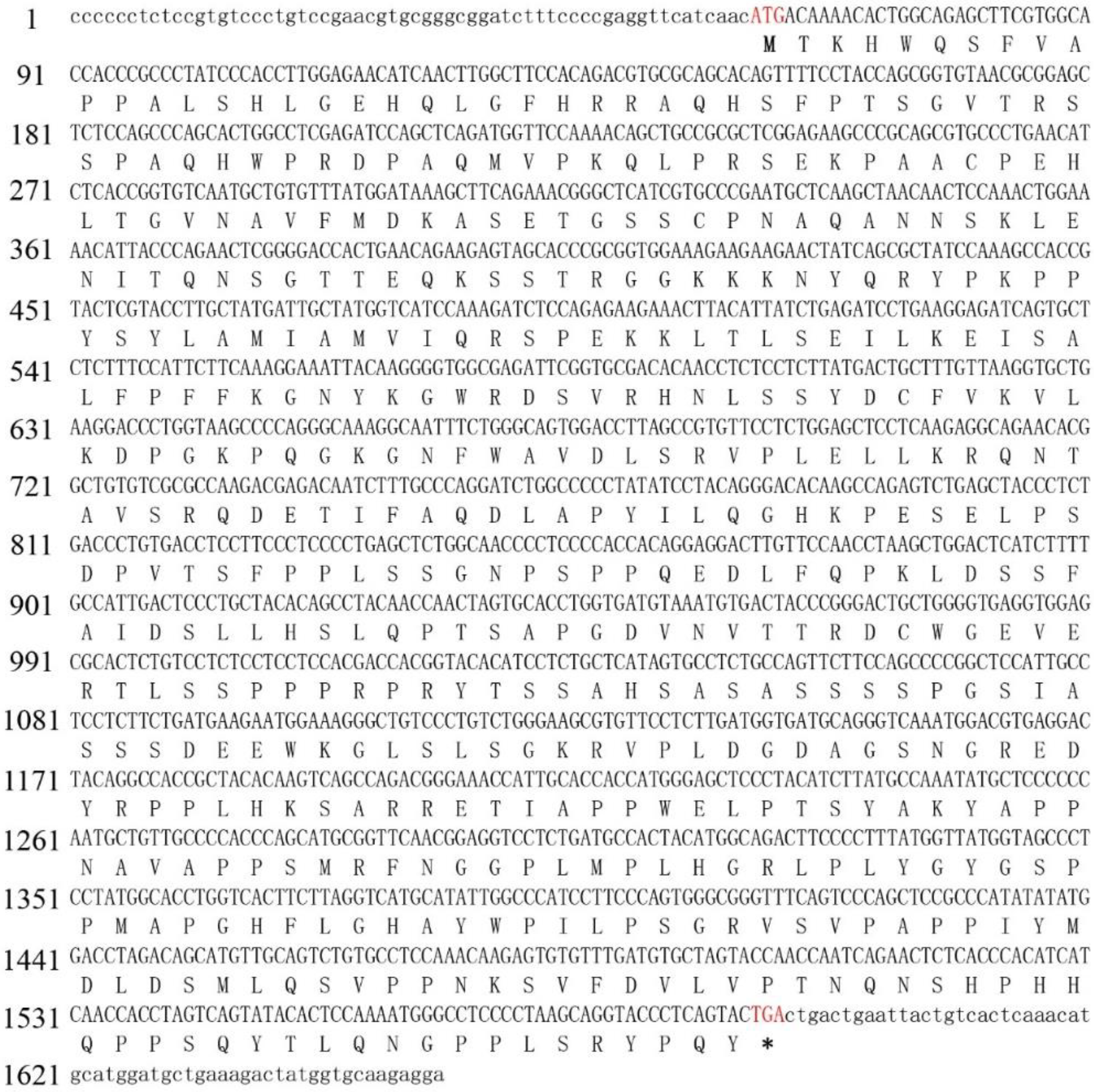
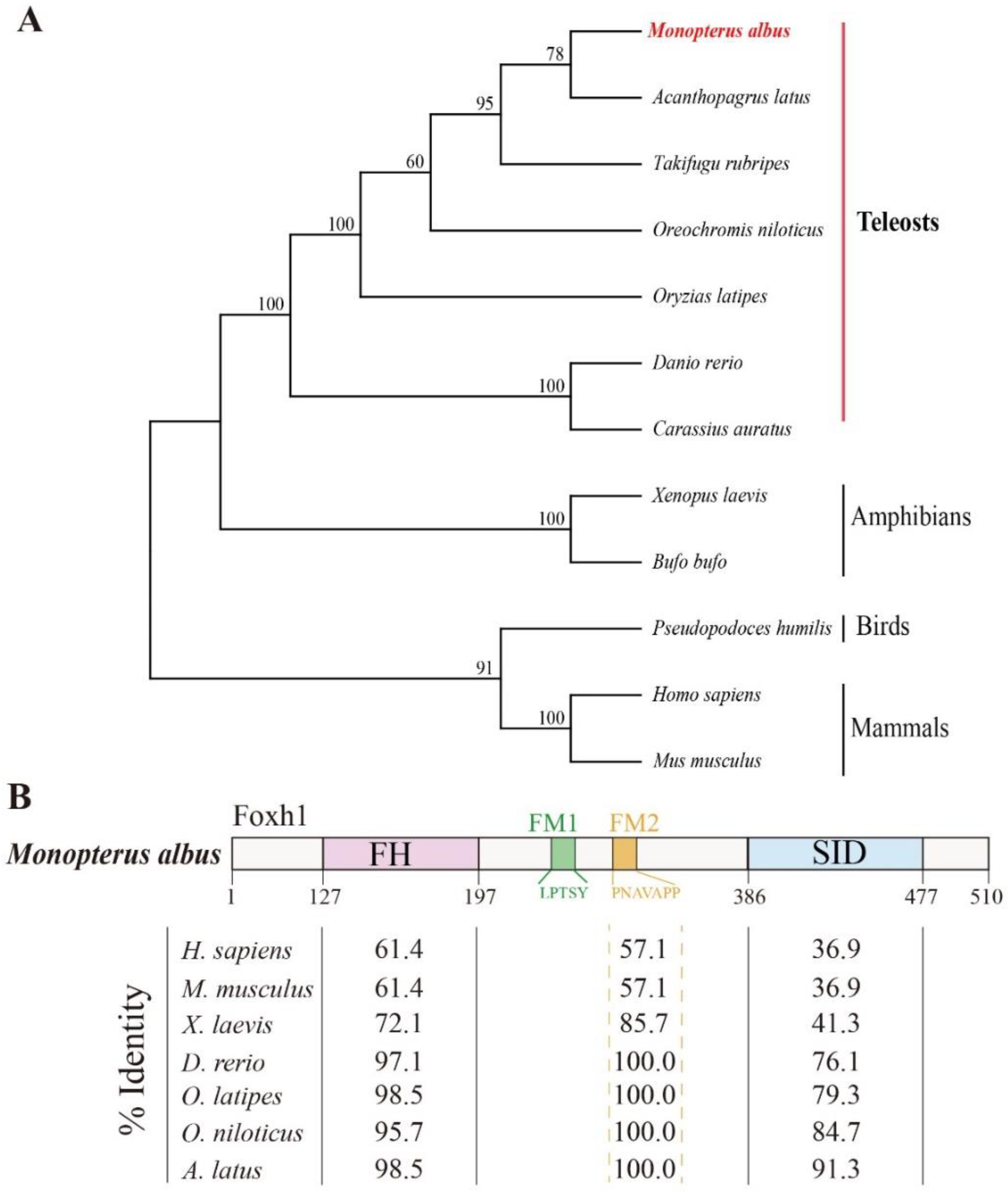
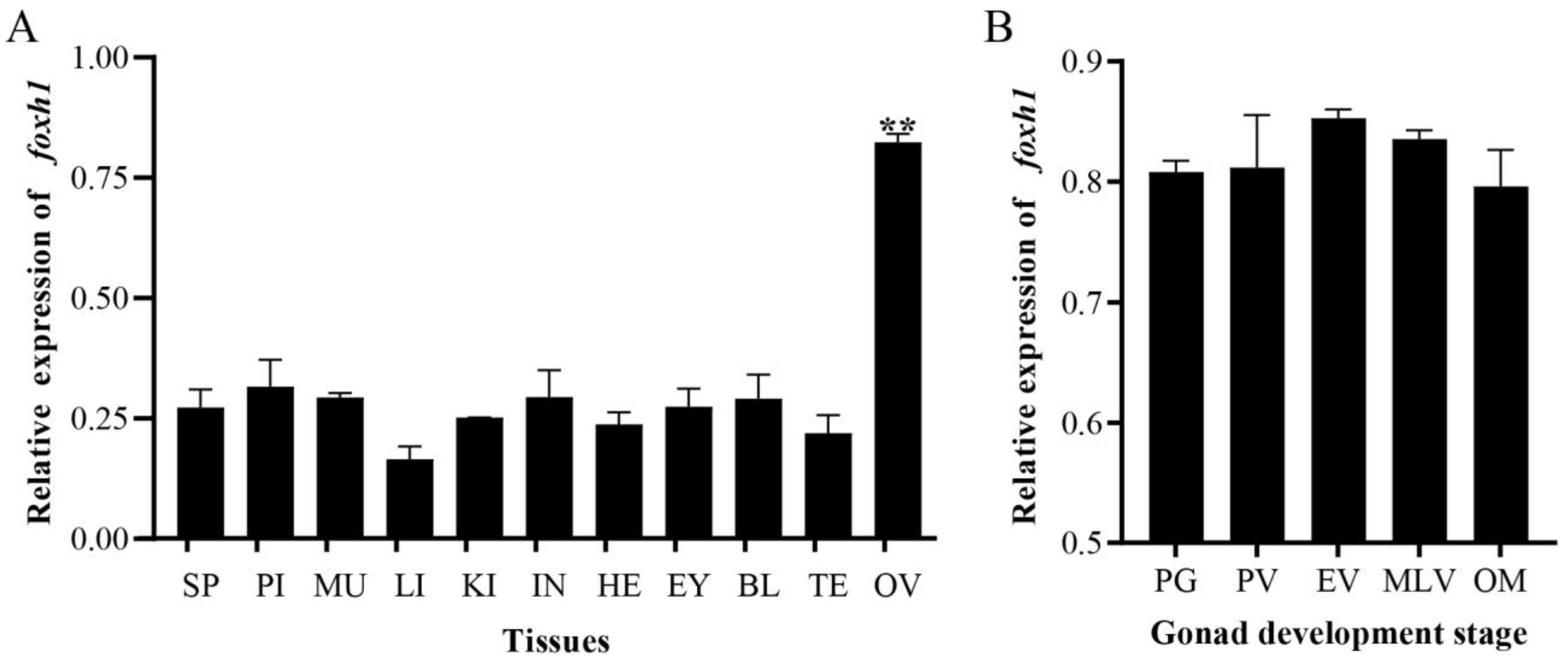
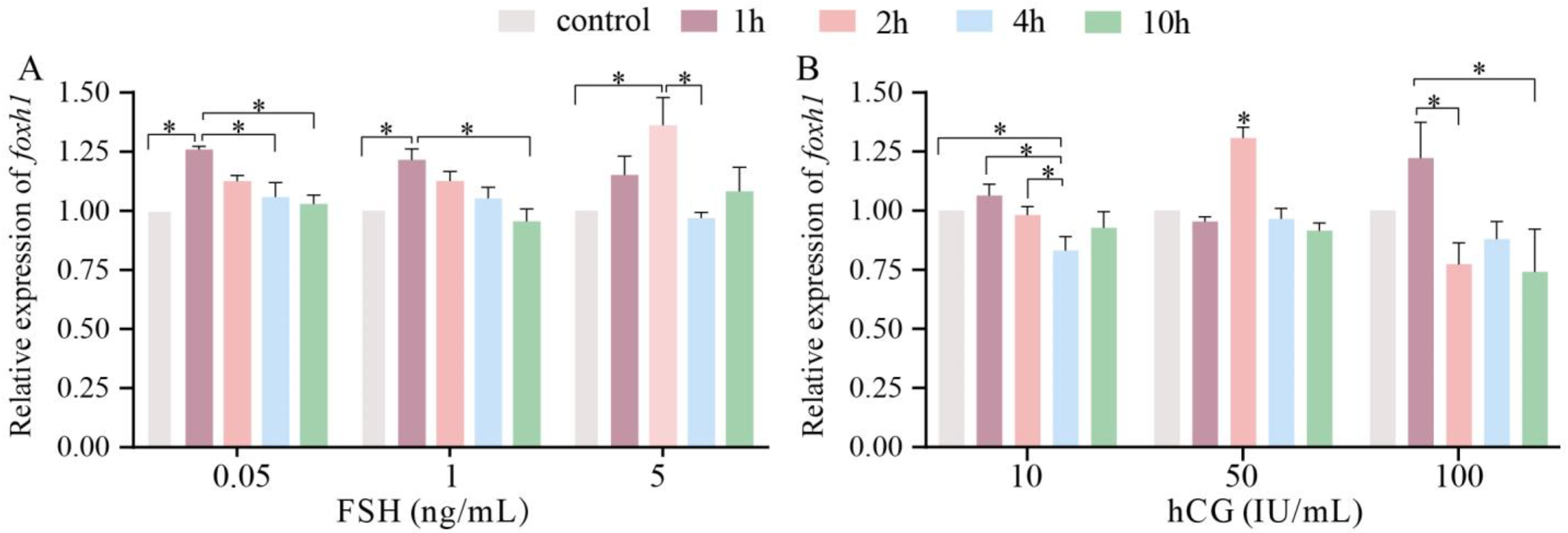
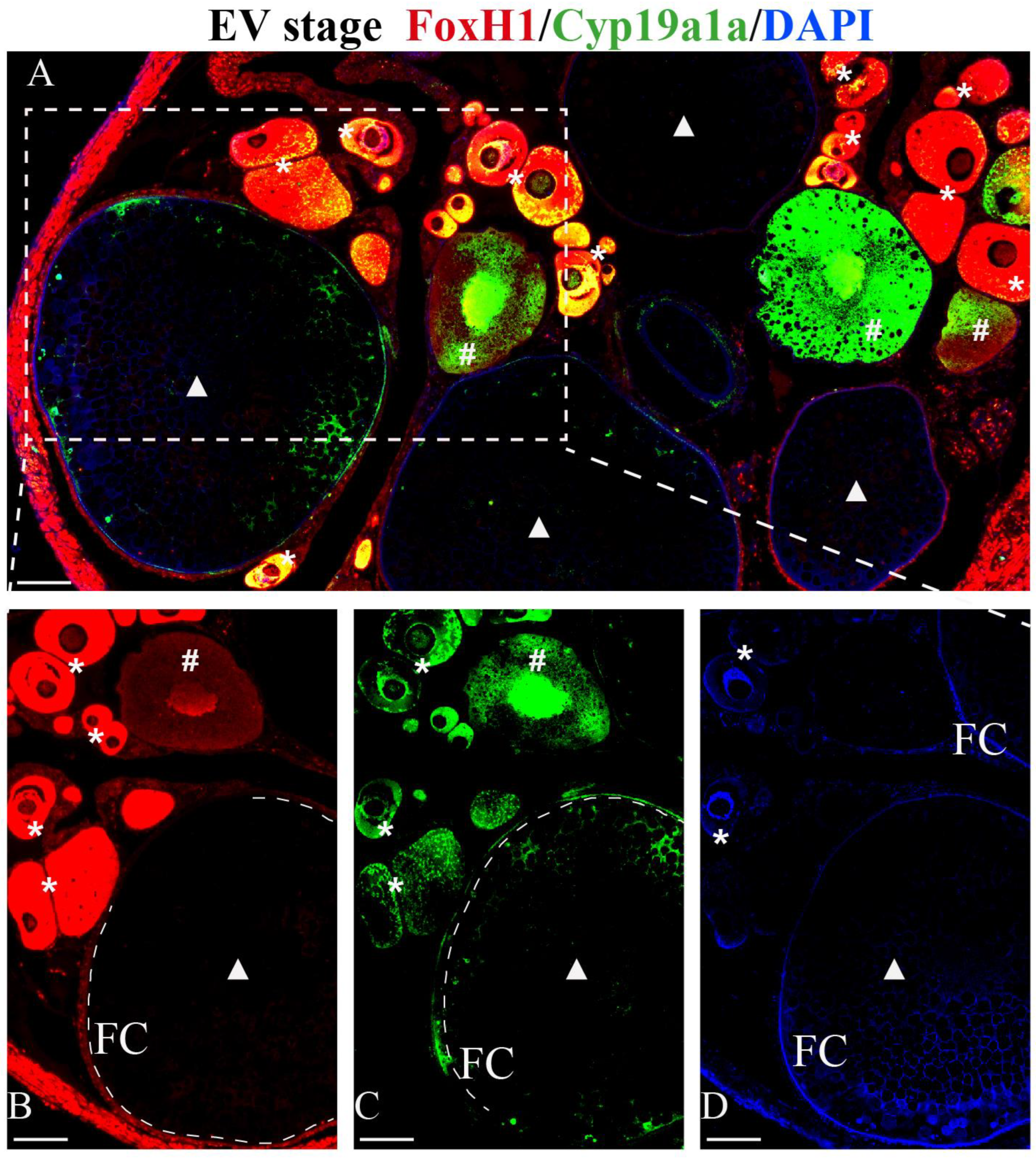
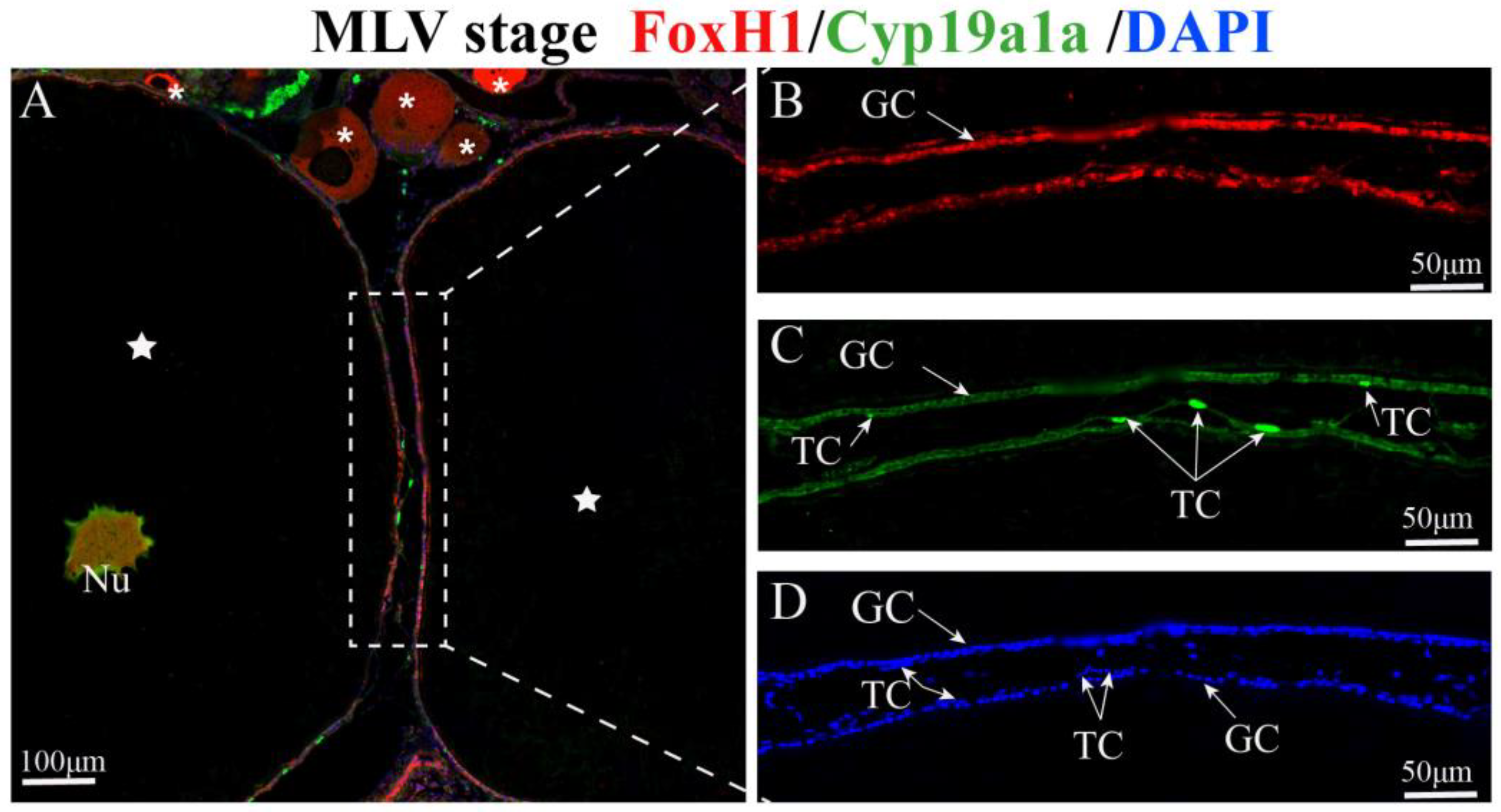

| Gene Name | Primer | Sequence (5′-3′) | Product Size (bp) |
|---|---|---|---|
| foxh1 | F1 | CGATTACGCAGCGGGATT | 1167 |
| R1 | GAGGCACTATGAGCAGAGGATG | ||
| F2 | CTGAGCTACCCTCTGACCCT | 985 | |
| R2 | CACTGTCTGTGGATCGGCAT | ||
| qF | CCCACCACAGGAGGACTT | 198 | |
| qR | GCAGAGGCACTATGAGCAG | ||
| ef1α | F | CGCTGCTGTTTCCTTCGTCC | 102 |
| R | TTGCGTTCAATCTTCCATCCC | ||
| rpl17 | F | GTTGTAGCGACGGAAAGGGAC | 160 |
| R | GACTAAATCATGCAAGTCGAGGG | ||
| pcyp19a1a | F | GCTCTTACGCGTGCTAGCCACCACTGACTTTGGTACAGAAG | For pGL3-basic construction |
| R | TAGATCGCAGATCTCGAGGTTCACAAGCAGGGATCAGAT |
| Plasmids | Mutation Site (5′-3′) | Post-Mutation Site |
|---|---|---|
| FoxH1-mut1 | TCTAATACAGA | gacgcggtccg |
| FoxH1-mut2 | ATAATTCAACA | gccgacatgtc |
| FoxH1-mut3 | TCAAATACACC | gacgcgtgcaa |
Disclaimer/Publisher’s Note: The statements, opinions and data contained in all publications are solely those of the individual author(s) and contributor(s) and not of MDPI and/or the editor(s). MDPI and/or the editor(s) disclaim responsibility for any injury to people or property resulting from any ideas, methods, instructions or products referred to in the content. |
© 2023 by the authors. Licensee MDPI, Basel, Switzerland. This article is an open access article distributed under the terms and conditions of the Creative Commons Attribution (CC BY) license (https://creativecommons.org/licenses/by/4.0/).
Share and Cite
He, Z.; Chen, Q.; Xiong, J.; Chen, M.; Gao, K.; Lai, B.; Ding, W.; Huang, J.; Zheng, L.; Pu, Y.; et al. FoxH1 Represses the Promoter Activity of cyp19a1a in the Ricefield Eel (Monopterus albus). Int. J. Mol. Sci. 2023, 24, 13712. https://doi.org/10.3390/ijms241813712
He Z, Chen Q, Xiong J, Chen M, Gao K, Lai B, Ding W, Huang J, Zheng L, Pu Y, et al. FoxH1 Represses the Promoter Activity of cyp19a1a in the Ricefield Eel (Monopterus albus). International Journal of Molecular Sciences. 2023; 24(18):13712. https://doi.org/10.3390/ijms241813712
Chicago/Turabian StyleHe, Zhi, Qiqi Chen, Jinxin Xiong, Mingqiang Chen, Kuo Gao, Bolin Lai, Wenxiang Ding, Junjie Huang, Li Zheng, Yong Pu, and et al. 2023. "FoxH1 Represses the Promoter Activity of cyp19a1a in the Ricefield Eel (Monopterus albus)" International Journal of Molecular Sciences 24, no. 18: 13712. https://doi.org/10.3390/ijms241813712
APA StyleHe, Z., Chen, Q., Xiong, J., Chen, M., Gao, K., Lai, B., Ding, W., Huang, J., Zheng, L., Pu, Y., Tang, Z., Zhang, M., Yang, D., & Yan, T. (2023). FoxH1 Represses the Promoter Activity of cyp19a1a in the Ricefield Eel (Monopterus albus). International Journal of Molecular Sciences, 24(18), 13712. https://doi.org/10.3390/ijms241813712







